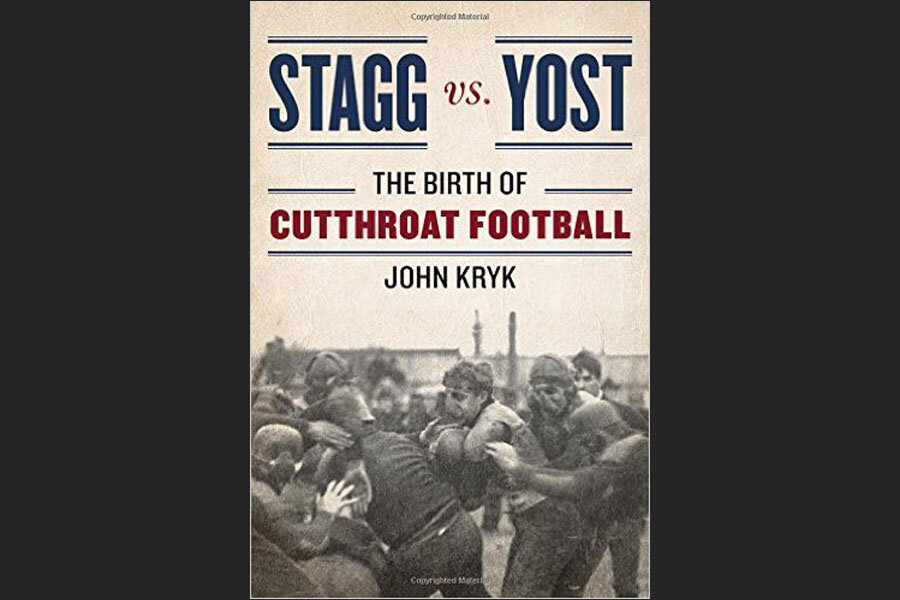Anybody who assumes that friendly rivalries characterized college football in the early 1900s only has to read “Stagg vs. Yost” to revise their perceptions. John Kryk paints the period as one in which corruption, under-the-table payments, and overzealous boosters were beginning to sully the sport’s image. The author zeroes in on the fierce competitiveness between two legendary coaches of the day, Michigan’s Fielding H. Yost and the University of Chicago’s Amos Alonzo Stagg, as a case study in how two prominent coaches pushed the boundaries. Stagg was obsessed with toppling the powerhouse Wolverines to the point that he was willing to hedge on the principles he publicly proclaimed. Access to newly available correspondence helps to authenticate the intensity of the rivalry.
Here’s an excerpt from Stagg vs. Yost:
“Fielding Harris ‘Hurry Up’ Yost never had a bowl game named after him, like Amos Alonzo Stagg; or a Hollywood feature film made about him, like Knute Rockne; or an iconic trophy named in his honor, like John Heisman; or a national youth football league named for him, like Pop Warner. Even when the Big Ten Conference in 2010 announced a slew of new trophies and awards to pay homage to its most iconic figures, Yost – the coach with by far the best football winning percentage in league history – was snubbed.
“Although lasting national fame escaped him, few American football coaches have ever understood the game as well as Yost or been as successful at it. At the University of Michigan in the first quarter of the twentieth century, and at four brief stops before that, he won 83 percent of his games – 198 victories against only 35 losses and 12 ties. That’s the best success rate of any coach who has lasted more than twenty-five years in the profession, college or pro, and that includes the likes of Stagg, Warner, Heisman, Joe Paterno, Bobby Bowden, Eddie Robinson, Bear Bryant, Bernie Bierman, Woody Hayes, Lou Holtz, and Bo Schembechler.”







